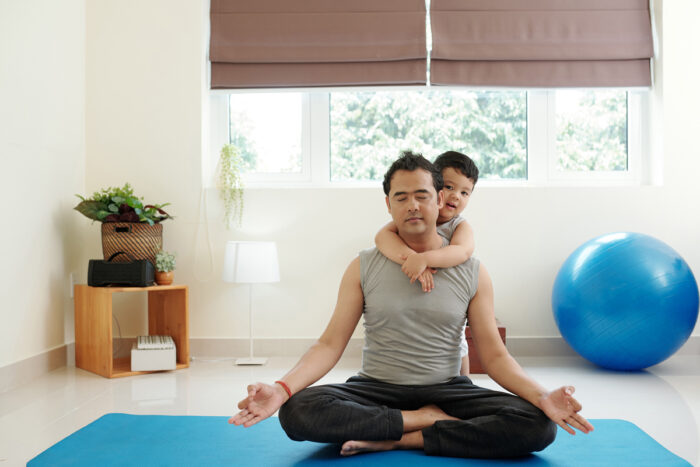5 Ways to Improve Your Balance and Resilience in Today’s New Normal
“Taking ownership of our behavior and becoming more resilient requires us to recognize that we are the authors of our lives.” – R. Brooks, Ph.D. and S. Goldstein, Ph.D.
How is the new normal of “post-pandemic” life working for you? Are you experiencing enough balance, resilience, and happiness?
As individuals, organizations, and communities, many of us are in a different headspace than we were before March 2020. The pandemic upended our lives, disrupted our habitual routines, and interfered with our desires, priorities, plans, and actions. Things may still feel quite unsettled. With COVID variants, political, economic, and social divisiveness, and tensions across the world, we may be yearning for a more satisfying balance in the new normal.
In my own life, some things that worked before, aren’t working now as I strive to blend today’s changing realities with how I’ve been functioning. For example, how do I effectively manage my time in the new normal? There are new activities I began during the quarantine period, such as joining a remote social action discussion group and taking guitar lessons. How do I manage my time to keep going with these activities as I also return to all that I used to do and the people I used to see, prior to the limitations of the pandemic lifestyle?
As I talk with folks, it seems that many of us are finding the uncertain, prolonged transition quite challenging. According to William Bridges, Ph.D. (2023), transitions progress in three general phases: (1) An ending in which something is over or fading, requiring us to let go of the familiar; (2) An in-between or neutral zone, where our internal dialogues occur as we adjust to the change – the loss of the old reality. We begin to create space and processes for what’s next; and (3) New beginnings emerge as we re-orient to the new realities and refresh our understandings, roles, and practices.
As you navigate your own life transitions through current realities, how can you strengthen your resilience and balance? Resilience is the process of adapting well to life’s challenges so you can adjust or bounce back (APA, 2023). Resilience doesn’t remove the cause of the transition, suffering, or distress, rather it’s the path to help you more effectively deal with the circumstances you face. We all react differently to life’s stresses and difficulties, so resilience can be a very personal process for each of us.

📝 Here Are a Few Ways to Shift Toward Greater Resilience:
1. Understanding that transitions, change, and impermanence are part of life and learning to adapt as life shifts. Life is filled with ambiguities and the call to adjust. I like to say that most of life is lived in the “gray zone.” Most situations are not black or white but evolve on a continuum. Sharpening your ability to embrace uncertainty recognizes the gray aspects of life’s flow. The optimal course is not always apparent at first glance. Opening to the range of possibilities during uncertain, murky situations and emotions can help you refrain from rushing into premature conclusions and actions – and there are usually multiple ways to approach challenges.
2. Seeing the big picture. Ask yourself “How much will this matter in a month, a year, or ten years?” A broadened, balanced perspective can offer a more holistic vantage point for developing creative, practical, and resilient solutions. When we feel overwhelmed, stressed, and vulnerable, we may lose perspective. Engaging the wisdom within and attuning to what’s really important can clarify priorities.
3. Leaning on relationships and building a good support system. Maintaining and building positive connections is a powerful strategy to help you pilot through challenging situations. As you navigate conflicts and challenges, your connections, relationships, and support can offer a guiding light and helping hand when you are floundering. Christopher Peterson (2006), a founder of Positive Psychology, is known for emphasizing that “other people matter.”
4. Trying to increase your dose of positive emotions each day. For example: exposing yourself to sources of humor and joy; learning to be optimistic – seeing the glass half full rather than half empty; experiencing and sharing thankfulness and gratitude; noticing the beauty of the natural world; reaching out to share caring, fun, meaningful moments with others.
5. Engaging in practices to help you calm and relax. How can you offer yourself intermissions during the day? Whether you’re comfortable with walking in natural surroundings, listening to or making music, creating art, exercising, breath awareness, meditation, or contemplative prayer, these kinds of practices can help to strengthen resilience and balance.
The objective is not to empty the mind, but to open toward calm and mindful attention. You might try taking a mindful breath to create a pause to center down before responding in a difficult situation. Focusing briefly on your breathing with the intention to calm yourself can help you slow down. One or several breaths can create the difference between an automatic, visceral reaction and an intuitive response.
If you like what you’re reading in this newsletter and would like to learn more, I offer seminars for workplaces and community organizations. Some topics include:
- Yes, I Can: 10 Transformative Strategies to Empower Yourself from the Inside-Out
- Integrating Work-Life Balance
- Navigating Midlife and Beyond with Meaning and Resilience
- Strengthening your Leadership Skills with Mindfulness and Compassion
Here’s to your resilience and thriving in life’s new normal!
© 2023 Ilene Berns-Zare, LLC, All Rights Reserved
Disclaimer: This article is for informational purposes only. No content is a substitute for consulting with a qualified mental health or healthcare professional.
An earlier version of this article was published at Psychology Today.
Send your comments and suggestions to Ilene!
Click here to send Ilene an email with your thoughts about this blog post.
References:
- American Psychological Association (2023). Resilience.
- Bridges, W. (2023). Bridges Transition Model.
- Brooks, R. & Goldstein, S. (2004). The Power of Resilience: Achieving balance, confidence, and personal strength in Your life. New York, NY: McGraw-Hill.
- Peterson, C. (2006). A Primer in Positive Psychology. New York, NY: Oxford University Press.
Ilene is a Featured Author on PsychologyToday!
Read her blog series Flourish and Thrive: Navigating transitions with mindfulness and resilience.

What steps will you take to create more balance in your life?
Tap into your strengths, purpose, and potential to flourish in life and work.
If you’d like to discuss how Ilene Berns-Zare Coaching can help you achieve your goals, contact Ilene.
Coaching with Ilene Can Help You Call Yourself to Action
Ilene Berns-Zare, PsyD, PCC, CEC, is an Executive and Personal Coach and Speaker. Ilene helps people live their best personal and professional lives by bringing mind, body, and spirit into flow with strengths, purpose, and potential. She inspires clients to find fresh perspectives and access their full potential as creative, resourceful, whole persons. Find Ilene online, set up a free discovery coaching consultation, and access free resources at https://ibzcoaching.com/.
Please share this blog with anyone who might be interested in reading it!
We would love to hear from you! We are interested in your suggestions for this newsletter, your reactions to this one, or providing more information about coaching.



